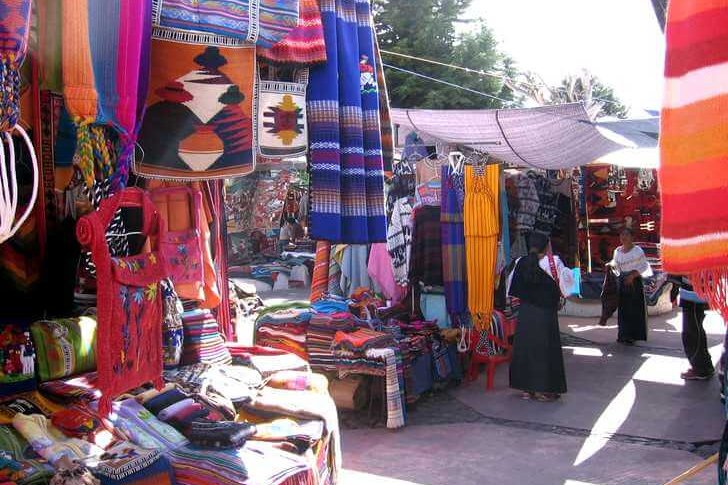In the equatorial zone of the Andes, the Republic of Ecuador is located, famous primarily for its unique natural wealth. National parks, mountain lakes, waterfalls, volcanoes and, of course, the amazing Galapagos Islands - this is not a complete list of Ecuador's natural sites that you should definitely visit in this country.
Connoisseurs of urban tourism will enjoy the organic combination of the ancient heritage of the Incas with the cultural traditions of the Spanish conquerors. In the cities of Ecuador, many examples of colonial architecture have been preserved. And beach lovers should opt for such resorts as Montañita, Salinas, Los Frailes and the beach of the canton of Atacames.
Several Indian tribes live on the territory of the country, for visiting which you can order special excursion tours. The Republic of Ecuador is considered one of the safest countries in South America, but, as elsewhere, tourists should be wary of pickpocketing and fraud.
What to see in Ecuador?
The most interesting and beautiful places, photos and a brief description.
- Galapagos Islands
- City of Quito
- Volcano Cotopaxi
- City of Tena
- El Cajas National Park
- City of Montañita
- Historic center of Cuenca
- Basilica del Voto Nacional
- Volcano Chimborazo
- Middle of the World (Ciudad Mitad del Mundo)
- Church of San Francisco in Quito
- Church of La Compania in Quito
- Sangay National Park
- Hill of El Panecillo
- Cathedral of Nueva, Cuenca
- Palace of Carondelet
- Paylon del Diablo Waterfall (Devil's Cauldron)
- Ingapirka
- Quilotoa crater
- Otavalo Market
Galapagos Islands
Officially, the Galapagos Islands were discovered in 1535, and in 1832 they became part of Ecuador. Today, the group of these islands is considered a national park, which is home to giant tortoises, marine iguanas, Galapagos sea lions and other unique animals and birds. For its beauty, the Galapagos water area is valued by divers from all over the world.
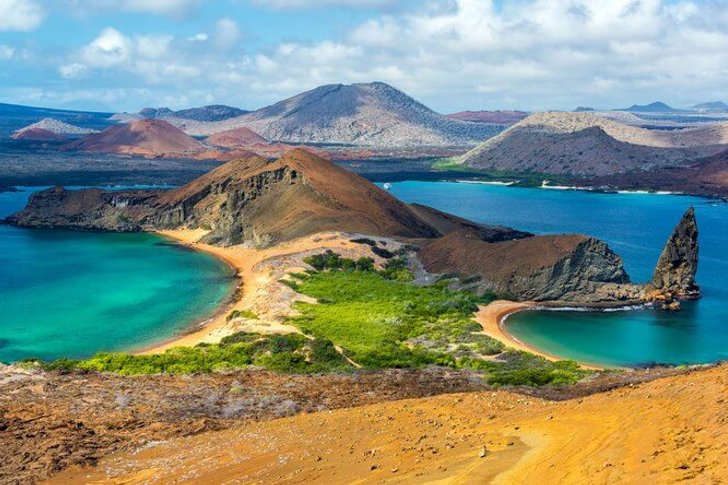
City of Quito
One of the most beautiful cities in South America is Quito, the capital of Ecuador. The old part of the city successfully combines Dutch, Spanish and even Indian architecture. Quito has many museums, four large park areas, and an observatory. The Teleferico cable car will take everyone to the Pichincha volcano.

Volcano Cotopaxi
One of the highest active volcanoes on the planet is located at a distance of about 50 km from the capital of Ecuador. Cotopaxi was first climbed in 1872. Today, at the foot of the volcano, you can set up a tent camp, ride horses or mountain bikes. And to safely climb to the top, it is best to use the services of a guide.
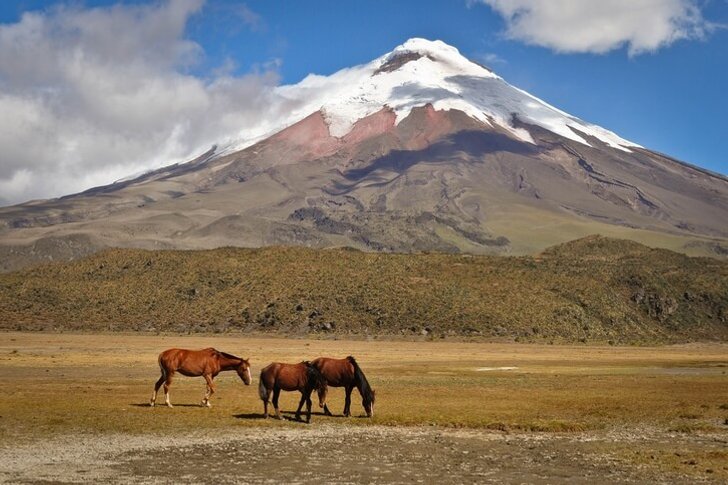
City of Tena
The capital of the province of Napo, a very popular city used by tourists as a springboard for starting trips to the jungle. Near the city, you can go kayaking and rafting, as well as spend the night in an authentic Indian hut at the Orchid Paradise inn, located 6 km from Tena.
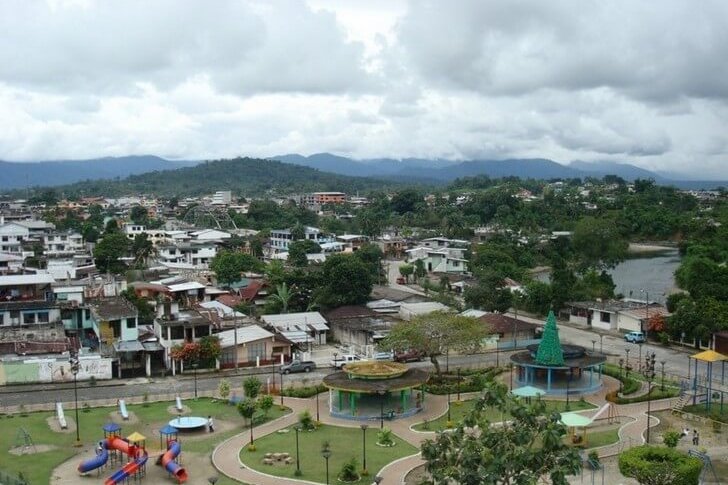
El Cajas National Park
In the mountains of Ecuador there is a unique area, which since 1996 has been considered a national park. About 270 beautiful lakes of El Cajas, in which there are many trout, are of glacial origin. Due to the incredible beauty of its landscapes, this park is highly valued by tourists.
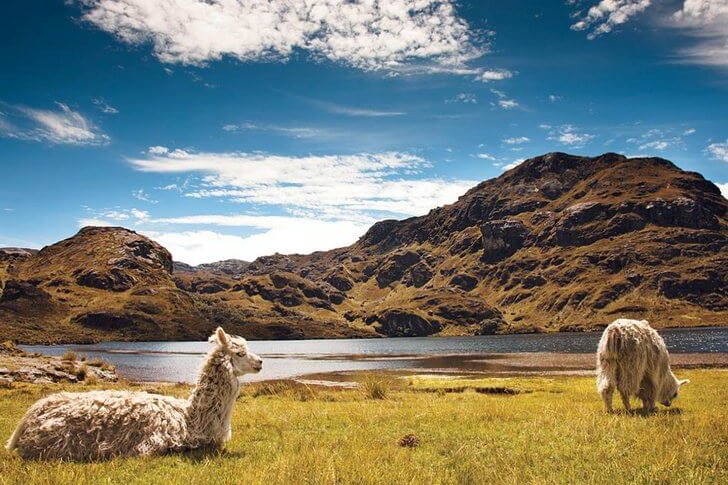
City of Montañita
A real find for surfers is the city of Montañita, located on the Santa Elena Peninsula. There are very favorable conditions for windsurfing, scuba diving and bodyboarding. Once the city of Montañita was popular with adherents of the hippie movement, so even today you can hear reggae music performed by street musicians here.
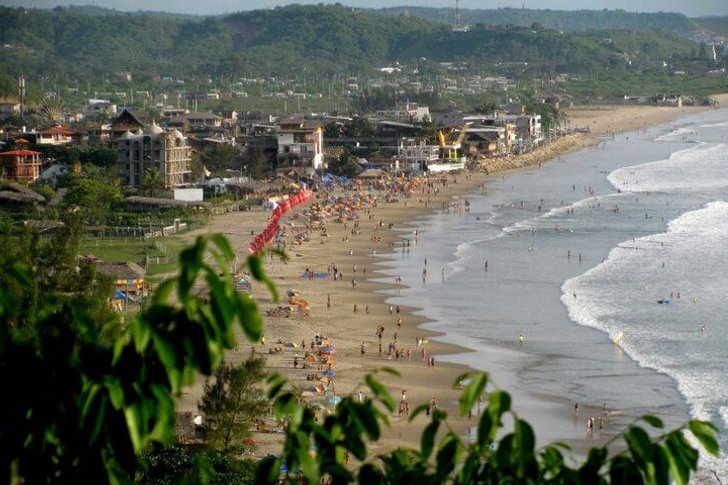
Historic center of Cuenca
In the southwest of the country is the third largest city in Ecuador - Cuenca. Archaeological studies have shown that the first settlements on the site of modern Cuenca date back to 500 AD. The area, delineated by the streets of Gran Colombia, General Torres and Ermano Miguel, is the main tourist attraction in Cuenca.

Basilica del Voto Nacional
In the historic center of Quito is the extraordinarily beautiful Basilica of Del Voto Nacional. This Roman Catholic cathedral is made in the Gothic style, but instead of the traditional chimeras of Del Voto Nacional, it is decorated with figures of pelicans, turtles, monkeys and other representatives of the fauna of Ecuador. From the highest tower of the basilica, you can enjoy a beautiful view of the city.
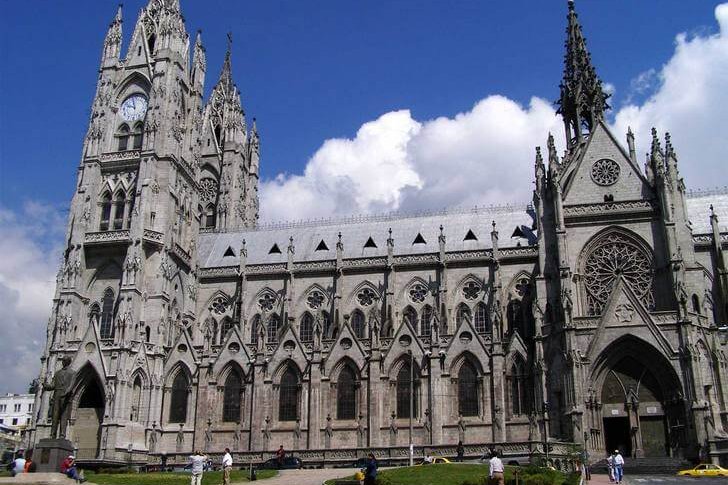
Volcano Chimborazo
For the first time, the highest point of Ecuador was conquered in 1880. And today, the Chimborazo volcano is one of the most visited mountains, climbing which usually takes 13-16 hours. The ascent starts at the Karep hut, then stops at the Vampera hut, and the end point of the route is Veintemille peak.

Middle of the World (Ciudad Mitad del Mundo)
The 30-meter monument, marking the place where the equator passes, is located 26 km from Quito. It was erected in the 19th century in memory of the first Geodetic Mission of the French Academy of Sciences. Despite the proven inaccuracy in measurements and the actual passage of the equator a little north, Ciudad Mitad del Mundo is very popular among Ecuadorian tourists.
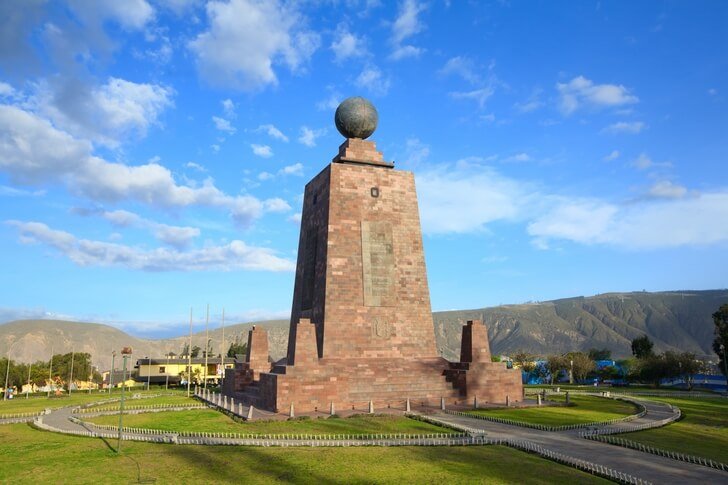
Church of San Francisco in Quito
The Roman Catholic complex of St. Francis was built in the capital city of Quito in the 16th century. The complex consists of a main church, a refectory, a wine cellar, a garden and even a prison. The rich interior decoration makes the original church of San Francisco extremely popular among visitors to Ecuador.

Church of La Compania in Quito
One of the most ornate churches in Quito, a significant monument of the Spanish Baroque and a popular tourist attraction - all this is the Church of La Compagna, the first stone of which was laid in 1605. The church building was completed in the second half of the 17th century. Since then, the church has been subjected to various restorations more than once, the last of which ended in 2005.
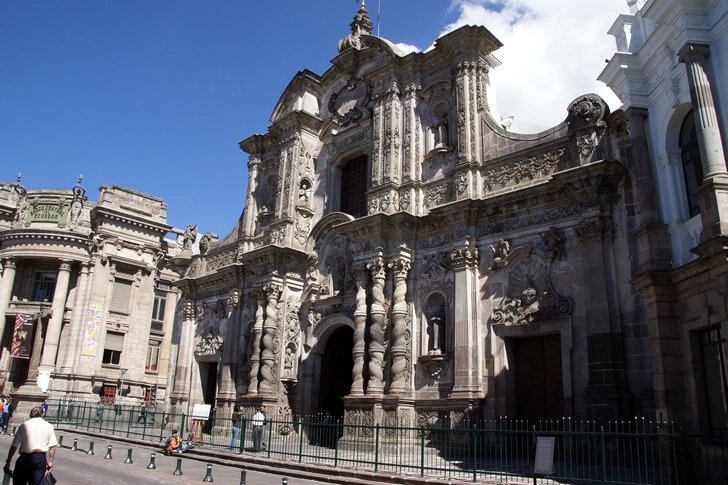
Sangay National Park
South of Quito is the Sangay National Park, which covers an area of more than 5,000 km². There are two active (Tungurahua and Sangay) and one extinct (Altar) volcanoes, mountain rivers and lakes, waterfalls and thermal springs. Tourists can climb the mountains on foot or on bicycles, and special trails have been prepared for horseback riding.

Hill of El Panecillo
In the central part of Quito, there is El Panecillo hill, on top of which is the famous statue of the Virgin Mary. The hill is one of the most visited places in Quito, because the 41-meter Virgin Mary is visible from almost any part of the city. Built in the 1970s, the Madonna is depicted as a winged angel standing on a globe and crushing a snake with its feet. At the top of the statue there is an observation deck that tourists like to visit.

Cathedral of Nueva, Cuenca
The famous Catholic church, known as the Cathedral of the Immaculate Conception or the Cathedral of Nueva, is one of the symbols of the city of Cuenca. The building began to be built at the end of the 19th century and completed almost a hundred years later. This functioning neo-Romanesque church is crowned with huge blue and white domes, for the construction of which Czechoslovak tiles were specially delivered to Cuenca.
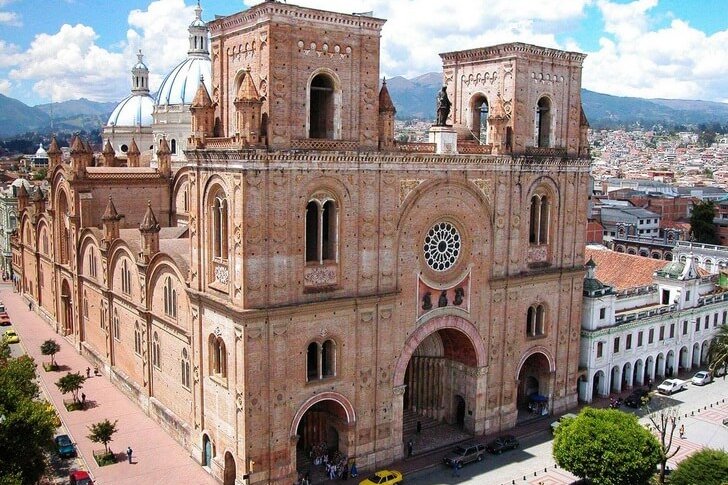
Palace of Carondelet
The building of the residence of the government and the president of Ecuador, located on Independence Square in Quito, was built in the 16th century. After Ecuador gained independence, Carondelet got its current name and began to be used as a presidential palace. Since 2007, the residence has been available for visiting by everyone.
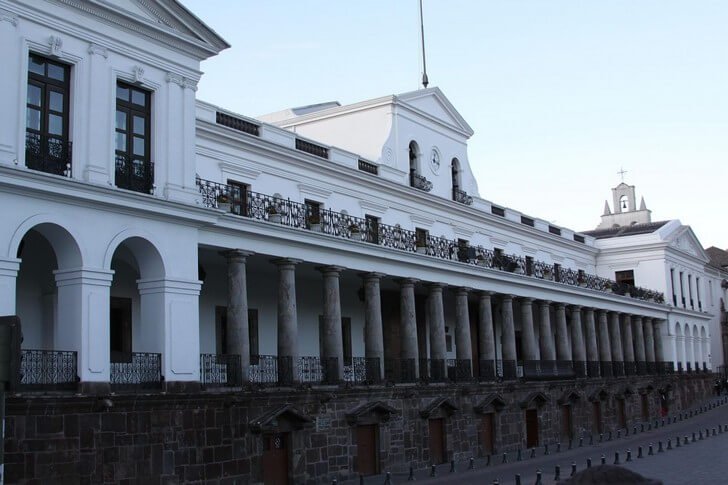
Paylon del Diablo Waterfall (Devil's Cauldron)
One of the most beautiful and impressive places in Ecuador is the Paylon del Diablo waterfall. To get to the Devil's Cauldron, as this place is also called, tourists have to overcome a rather narrow tunnel. But the difficulties of this path are more than offset by the beautiful view of the huge rumbling wall of water spray, which is literally at arm's length from the observation deck of the waterfall.
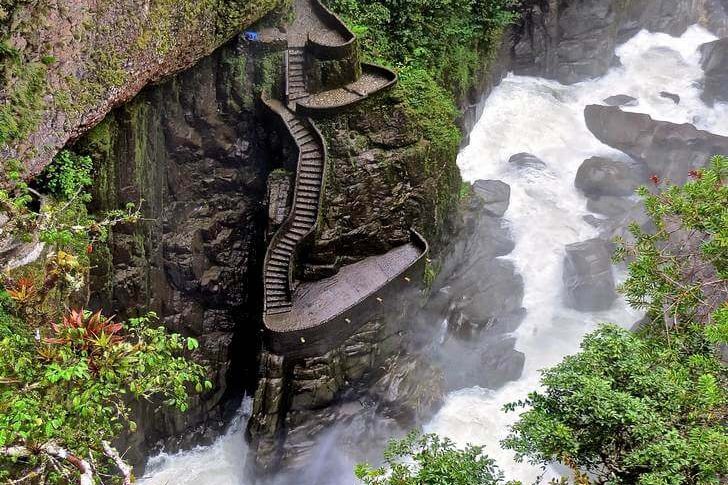
Ingapirka
The archaeological complex, located near Cuenca, is one of the most significant monuments of the ancient Inca civilization. Once Ingapirca was a small fortified city that suffered greatly from the Spanish conquests. The restoration of the ancient ruins began only in the middle of the 20th century, and since then the monument has been open to the public.
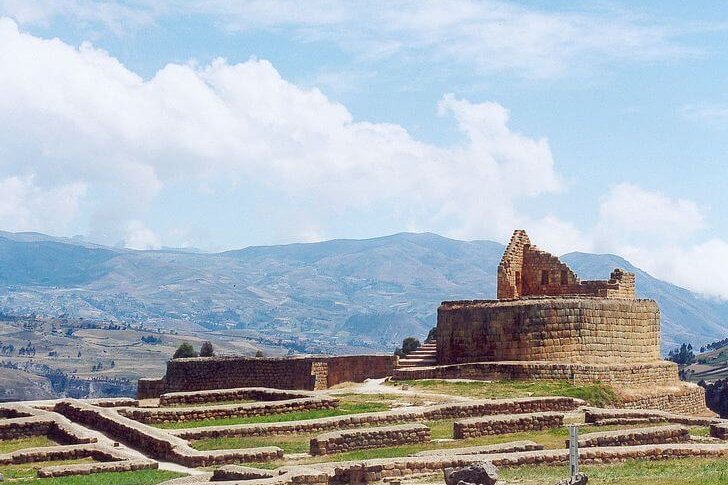
Quilotoa crater
About 800 years ago, the crater of the extinct volcano Kilotoa was filled with water, forming an unusually beautiful lake. There are several hot springs here, and for a small fee, locals can take tourists canoeing on the lake. The village of the same name, located nearby, is ready to shelter everyone who wants to stay longer in this beautiful place in their hotels.

Otavalo Market
Between the volcanic peaks of Imambura, Mohanda and Cotachachi, the small town of Otavalo is located, famous for its market of authentic Indian products. Traditionally, the Otovalians were engaged in agriculture, but the growth of tourism has led to a reorientation of production, and now the locals are busy making popular textiles and handicrafts.
